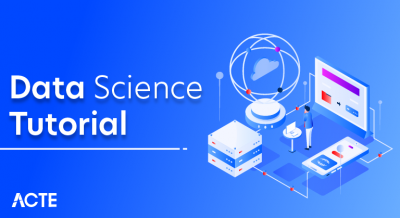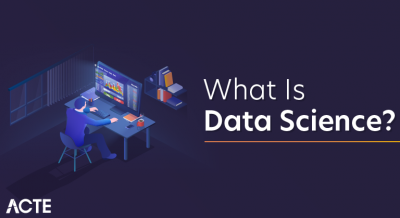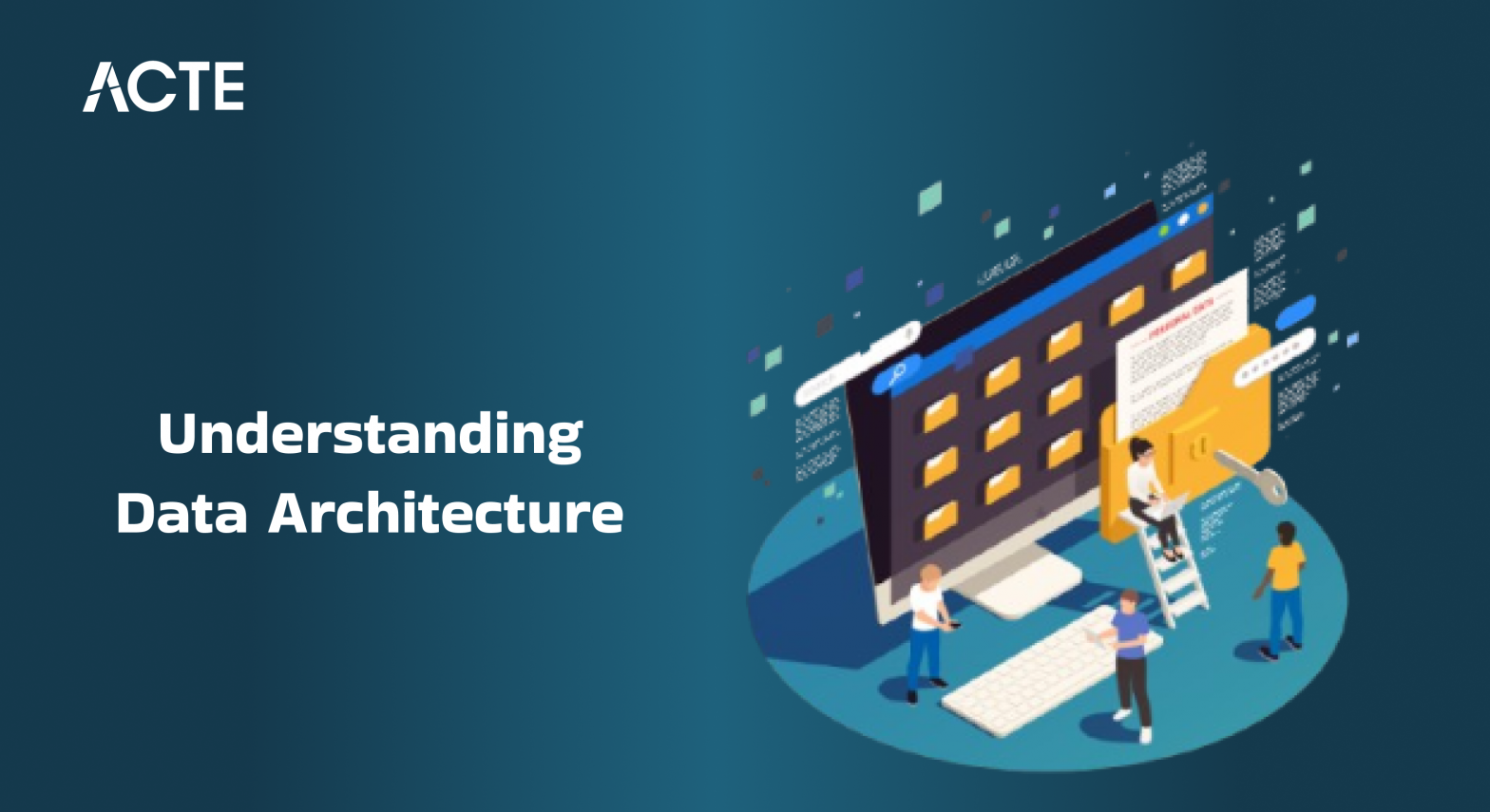
- Introduction to Data Architecture
- Importance of Data Architecture in Business
- Key Components of Data Architecture
- Data Storage and Data Lakes
- Data Integration and ETL Processes
- Database Management Systems (SQL vs NoSQL)
- Cloud-Based Data Architecture (AWS, Azure, GCP)
- Data Security and Governance Strategies
- Big Data and Real-Time Processing in Data Architecture
- Role of AI and Machine Learning in Data Architecture
- Best Practices for Designing Scalable Data Architecture
- Future Trends in Data Architecture
Introduction to Data Architecture
Data architecture refers to the structured design and organization of data systems within an enterprise, encompassing the models, policies, rules, and standards that govern how data is collected, stored, managed, integrated, and utilized. It acts as the foundational framework that ensures data is reliable, secure, and accessible across an organization, supporting both operational processes and strategic decision-making. In today’s data-driven world, where timely and accurate insights are crucial, gaining a solid understanding through Data Science Training can be instrumental in navigating and implementing effective data strategies. Modern data environments have evolved far beyond traditional architectures that focused on structured data in relational databases, now requiring solutions that handle vast volumes of both structured and unstructured data from sources like cloud platforms, IoT devices, and external APIs. To meet these complex demands, contemporary data architectures incorporate distributed computing, cloud-native technologies, and hybrid environments to deliver flexibility, real-time processing, and scalability. With the growth of big data, AI, and machine learning, robust architectures that can manage high-velocity, high volume, and diverse datasets are more critical than ever. A well-designed data architecture not only supports advanced analytics and governance but also fosters innovation and long-term resilience, enabling organizations to fully leverage their data assets in a rapidly evolving digital landscape.
Would You Like to Know More About Data Science? Sign Up For Our Data Science Course Training Now!
Importance of Data Architecture in Business
Data architecture plays a crucial role in business operations by enabling efficient data management and facilitating informed decision-making. It helps organizations streamline data flow, minimize redundancy, and maintain consistency across systems. A robust data architecture underpins data-driven strategies, enhances customer experiences, and fuels innovation. In today’s competitive and data-centric landscape, understanding foundational concepts such as those explored in What is Data Science can empower organizations to leverage data more effectively. Businesses that invest in solid data architecture gain faster insights, improve operational efficiency, and ensure compliance with regulations like GDPR, HIPAA, and CCPA. This not only supports sustainable growth but also strengthens customer trust by safeguarding data and upholding regulatory standards. By harnessing well-structured data systems, organizations can predict customer behavior, optimize supply chains, and refine marketing strategies, giving them a critical edge in fast-moving markets.
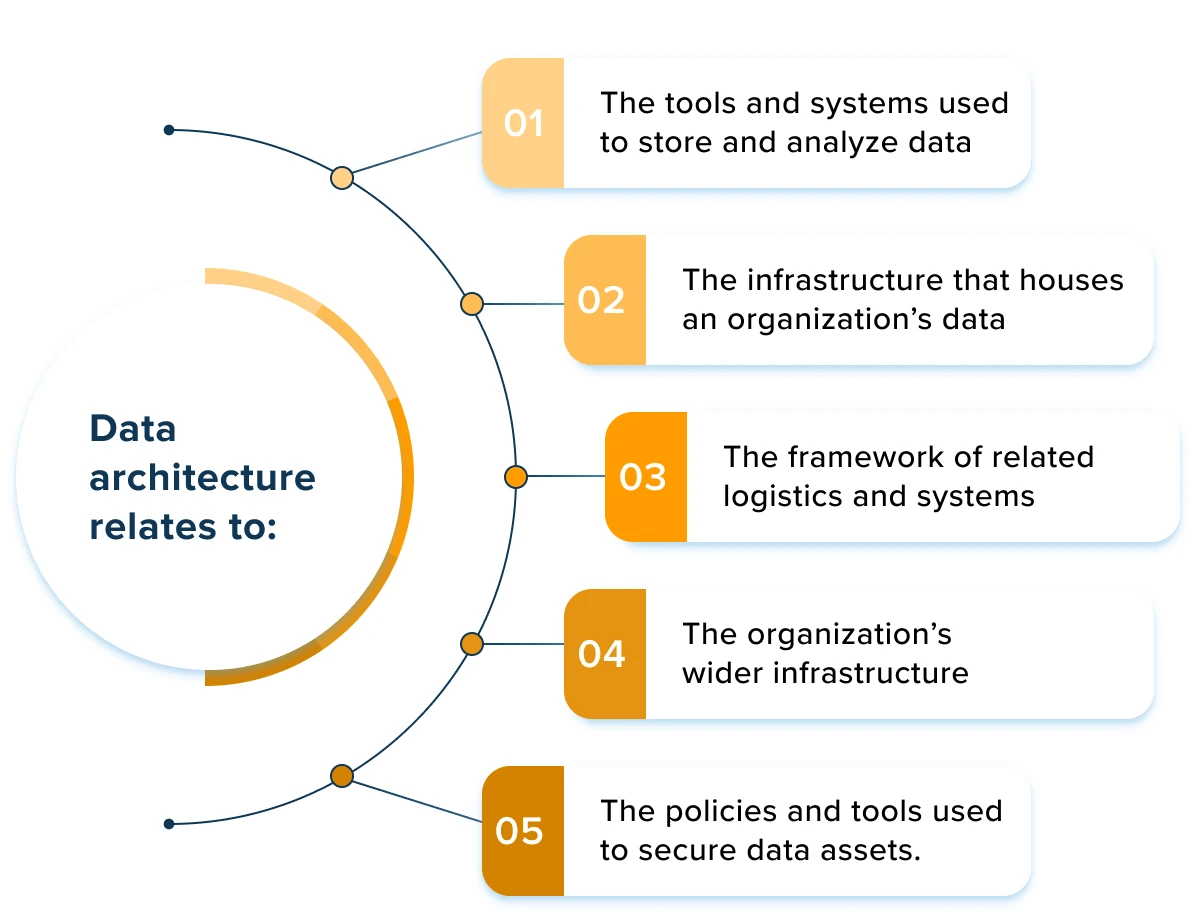
Key Components of Data Architecture
A well-structured data architecture consists of several key components, including:
- Data Sources: The origins of data, including transactional databases, IoT devices, social media platforms, and third-party providers.
- Data Storage: Systems where data is stored, such as data warehouses, data lakes, and cloud storage solutions.
- Data Integration: Processes that ensure seamless data movement across systems, often achieved through ETL (Extract, Transform, Load) pipelines.
- Metadata Management: A system for organizing, defining, and maintaining data definitions and relationships.
- Data Governance: Policies and standards that ensure data quality, security, and compliance.
- Data Processing and Analytics: Technologies that support data transformation, analytics, and visualization.
Data Storage and Data Lakes
Data storage plays a crucial role in the overall design of data architecture, with organizations selecting storage solutions based on their specific requirements. In recent years, data lakes have become a popular choice for managing vast volumes of raw, unstructured, and semi-structured data. Unlike traditional data warehouses that rely on structured formats and predefined schemas, data lakes provide flexible storage ideal for big data and advanced applications like artificial intelligence (AI) and machine learning. Understanding the principles behind What is Data Architecture can help organizations make informed decisions about storage frameworks that align with their business goals. To meet diverse storage demands, many companies adopt hybrid models that integrate relational databases, NoSQL systems, and cloud-based solutions, striking a balance between performance, cost efficiency, and scalability. Leading providers such as Amazon S3, Google Cloud Storage, and Microsoft Azure Data Lake offer robust, scalable platforms that support growing data needs while ensuring secure and efficient data management.
Do You Want to Learn More About Data Science? Get Info From Our Data Science Course Training Today!
Data Integration and ETL Processes
Data integration is the process of consolidating data from multiple sources into a unified system, ensuring consistency and accessibility across the organization. ETL (Extract, Transform, Load) processes are central to this effort, extracting raw data, converting it into structured formats, and loading it into storage systems such as data warehouses. Modern ETL tools now incorporate automation and cloud-based capabilities to manage increasingly complex workflows. Technologies like Apache NiFi, Talend, and Informatica support both real-time and batch data integration, helping businesses streamline data pipelines and maintain accurate analytics. These processes also enhance data quality by eliminating duplicates, addressing missing values, and standardizing data formats. For those looking to deepen their understanding and effectively apply these practices, Data Science Training offers valuable insights into the tools and methodologies essential for successful data integration.
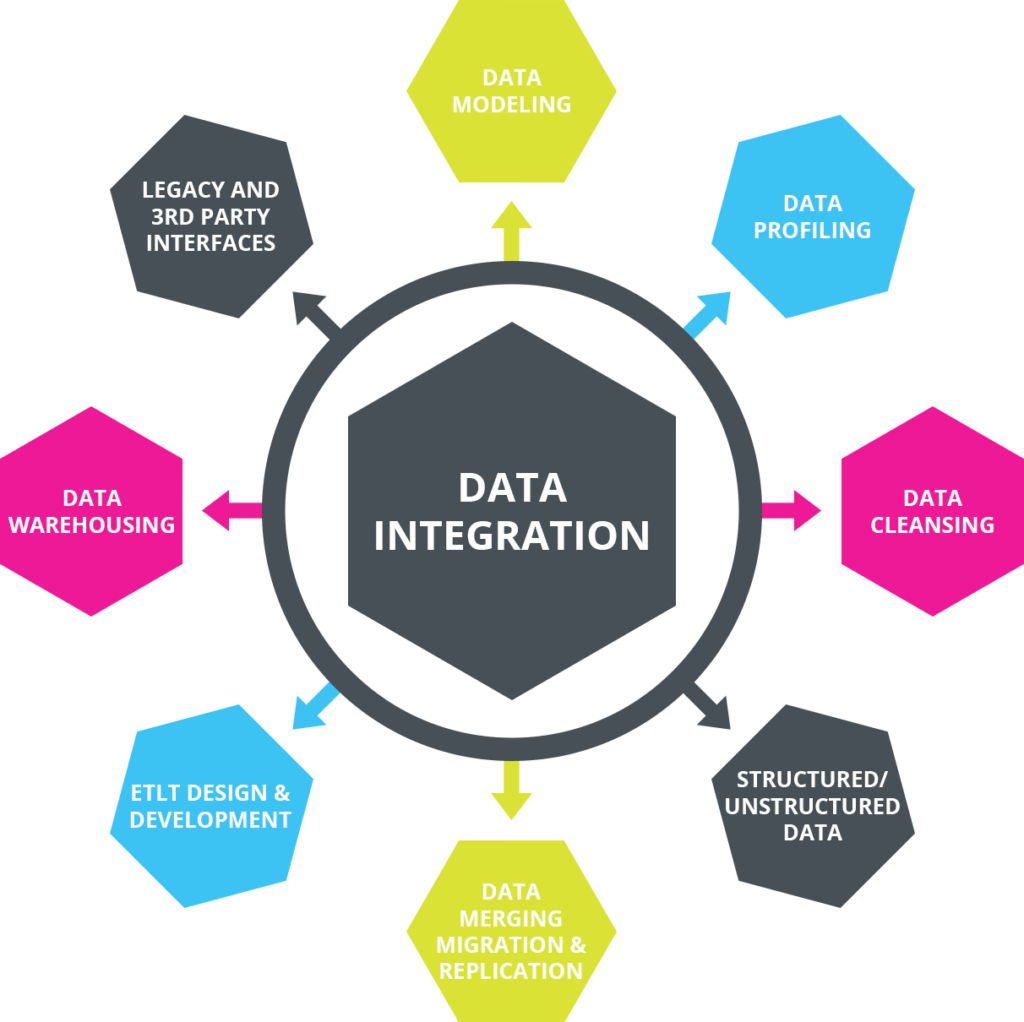
Database Management Systems (SQL vs NoSQL)
Database management systems (DBMS) are essential for organizing and managing data. They can be broadly categorized into:
- SQL Databases: Relational databases (e.g., MySQL, PostgreSQL, Microsoft SQL Server) that use structured schemas and ACID (Atomicity, Consistency, Isolation, Durability) compliance to ensure data integrity.
- NoSQL Databases: Non-relational databases (e.g., MongoDB, Cassandra, Redis) designed for flexible and scalable data storage, suitable for handling large-scale unstructured data.
- Scalability: Cloud platforms automatically adjust resources based on demand.
- Cost Efficiency: Pay-as-you-go models reduce infrastructure costs.
- Security and Compliance: Built-in security features ensure data protection and regulatory compliance.
- Global Accessibility: Cloud services enable seamless access to data from anywhere.
- Data Mesh Architecture: A decentralized approach to data ownership and management.
- Edge Computing: Processing data closer to the source for real-time insights.
- Blockchain for Data Integrity: Ensuring tamper-proof data transactions.
- Serverless Data Processing: Eliminating infrastructure management with fully managed cloud services.
- AI-Augmented Data Management: Using AI to automate data governance and analytics.
Choosing between SQL and NoSQL depends on factors such as data complexity, scalability needs, and transaction consistency requirements. Many modern architectures adopt a polyglot approach, combining both SQL and NoSQL databases to optimize performance.
Cloud-Based Data Architecture (AWS, Azure, GCP)
Cloud-based data architecture has revolutionized data management by offering scalable, flexible, and cost-effective solutions. Leading cloud providers AWS, Microsoft Azure, and Google Cloud Platform (GCP) offer a range of services for data storage, processing, and analytics.
Key benefits of cloud-based data architecture include:
Organizations leverage cloud-native tools like Amazon Redshift, Azure Synapse, and BigQuery to build robust data ecosystems that support AI, machine learning, and real-time analytics.
Want to Pursue a Data Science Master’s Degree? Enroll For Data Science Masters Course Today!
Data Security and Governance Strategies
Data security and governance are essential components of data architecture, safeguarding the integrity, confidentiality, and accessibility of data. Strong security strategies incorporate encryption, access controls, and regular audits to prevent unauthorized access and breaches. Governance frameworks focus on setting policies for data usage, ensuring compliance with regulations like GDPR and HIPAA, and defining roles and responsibilities for data management. Effective governance also includes metadata management and data quality control, ensuring that data remains accurate, consistent, and reliable over time. Staying informed about the latest trends and best practices, such as through Top AI Newsletters can help organizations refine their security and governance approaches. By integrating robust security measures with clear governance structures, organizations can protect sensitive data while ensuring it is used effectively across various business functions.
Big Data and Real-Time Processing in Data Architecture
Big data and real-time processing have become essential elements of modern data architecture, enabling businesses to efficiently manage and process vast amounts of data instantaneously. Big data systems use distributed storage and computing frameworks, such as Hadoop or cloud platforms, to handle enormous volumes of data from diverse sources, ensuring scalability and flexibility. Real-time processing tools like Apache Kafka and Apache Spark enable continuous data analysis as it is generated, allowing organizations to gain immediate insights and make data-driven decisions without delay. This capability to analyze data in real-time enhances an organization’s responsiveness to changing conditions, speeding up decision-making and improving operational efficiency. By integrating big data capabilities and real-time processing into their architecture, businesses can unlock significant value, such as enhanced customer experiences, more accurate predictive analytics, and optimized processes. Furthermore, industries like healthcare are increasingly leveraging these technologies, as seen in Artificial Intelligence in Healthcare to improve patient care and streamline operations. These capabilities allow organizations to remain competitive in an increasingly data-driven world, where quick adaptation and response to new information is crucial for success.
Go Through These Data Science Interview Questions & Answer to Excel in Your Upcoming Interview.
Role of AI and Machine Learning in Data Architecture
AI and machine learning play a transformative role in modern data architecture by enabling advanced analytics and automation. These technologies can be embedded within the architecture to provide predictive insights, pattern recognition, and anomaly detection from large datasets. Machine learning models are trained on historical data to make data-driven predictions, which can optimize decision-making across various domains like marketing, supply chain, and customer service. AI algorithms can also automate data cleaning, categorization, and transformation, making data processing more efficient and scalable. By integrating AI and machine learning into data architecture, organizations can unlock deeper insights and drive innovation.
Best Practices for Designing Scalable Data Architecture
Designing scalable data architecture is essential to accommodate growing data volumes and evolving business needs. Best practices involve adopting a flexible, modular architecture that can seamlessly expand with increasing data demands, often leveraging cloud-based storage and processing solutions for on-demand scalability. Techniques such as data partitioning and sharding help improve performance by distributing workloads across multiple servers, while data caching and indexing further enhance query efficiency. Incorporating a microservices architecture and containerization allows system components to scale independently, increasing operational agility. For professionals aiming to build expertise in these areas, engaging in Data Science Training can provide the necessary skills and insights to design and manage scalable, high-performance data systems. Ensuring data quality, consistency, and security remains crucial to support smooth and reliable scalability.
Future Trends in Data Architecture
The future of data architecture is shaped by emerging technologies and evolving business needs. Key trends include:
As data continues to drive innovation, organizations must adapt to new technologies and methodologies to build future-ready data architectures that support advanced analytics and AI applications.


